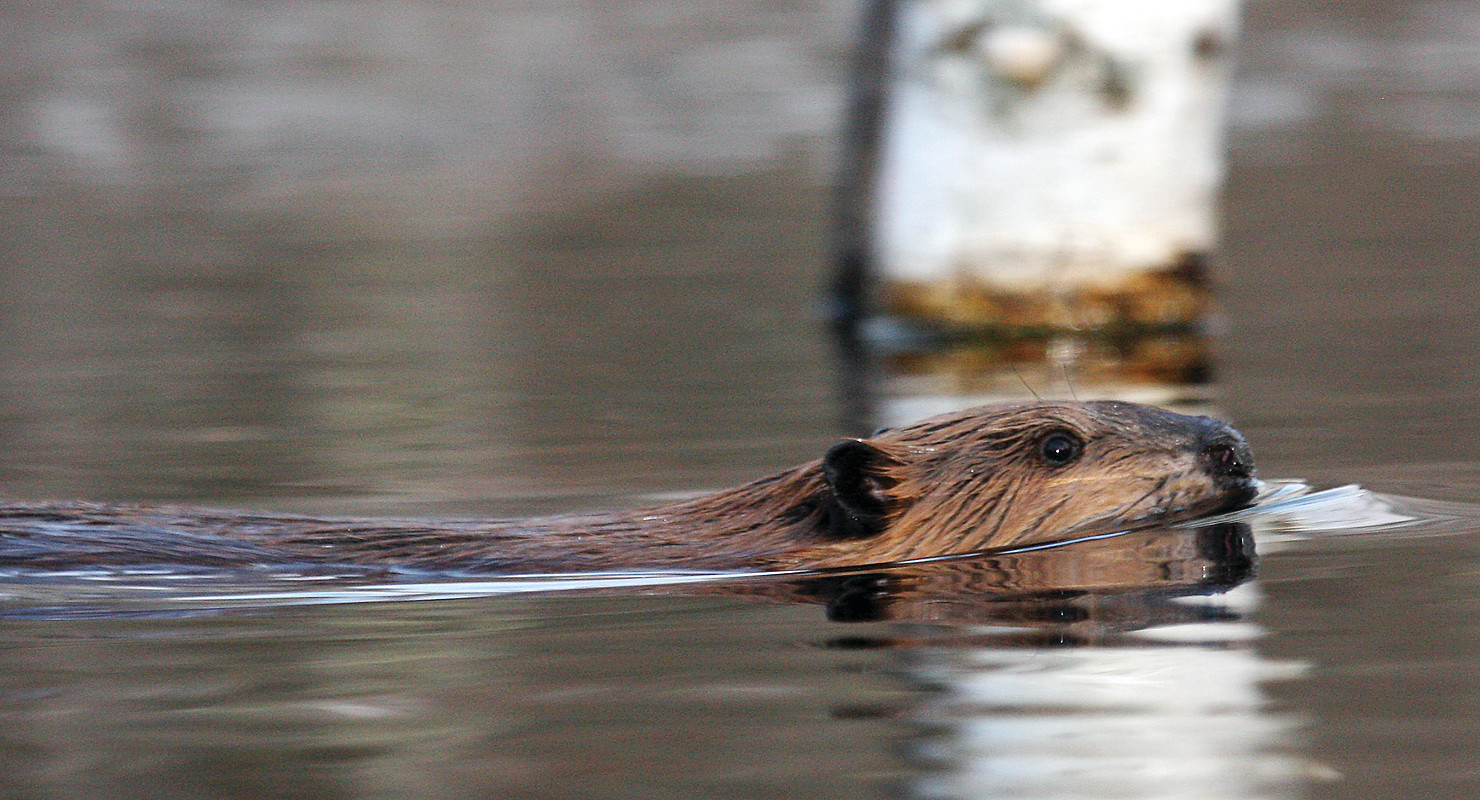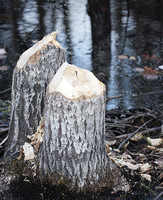Support the Timberjay by making a donation.
The busy season
Beavers are stocking the pantry for the long winter ahead
t’s the busy season at our neighborhood beaver pond, as the locals prepare for the impending season of scarcity. The signs of activity are everywhere, particularly along the pond’s edges, where the resident beavers have recently felled at least a couple dozen youngish aspen to put away for the winter.
It all seems pretty familiar. We fill our own wood sheds and stock the pantry and freezer with the season’s produce, and the beavers do pretty much the same. This time of year, the beavers are cutting aspen and willow and storing the branches and smaller trunks in a huge cache under the water, just outside one of their two lodges. These caches are readily visible this time of year— since some of the smaller limbs often stick out from the water— and are an easy way to tell if beavers are planning to spend the winter in any given lodge. Beaver lodges can last for decades and they can fall in and out of use over the years, so this time of year I always look for the telltale signs of a fully-stocked pantry to determine if a lodge is currently active.
During the winter, the beavers will spend their time inside their lodge, with occasional forays under the ice to grab a branch or two to chew on inside. Beavers, who seem to prefer aspen over any other tree, strip off and eat the inner bark, which is bitter to our taste but desirable to beavers.
Once the ice arrives on the beaver pond, which could happen this coming week given our recent cool down, the beavers will be locked in for the winter. They’ll live the next several months within their dark lodge, only occasionally venturing out of one of their underwater exits to grab a bite. While their pantry of sticks is their primary source of winter food, they also store large amounts of fat in their tails this time of year, which they will also rely on during the winter months. A beaver’s tail, in the fall, is usually substantially larger that it will be when the beavers emerge from their lodges next April or May.
Inside the lodge, the winter conditions are remarkably comfortable. The lodges typically have two levels, one large level just above the water, where the beavers will eat and dry off after ventures under the ice. The second level, which is usually higher and drier, is where the beavers sleep. While beavers are not hibernators, they undoubtedly sleep for extended periods during the winter months, simply because there isn’t much else to do. The next time that cabin fever settles over you in March, just be glad you aren’t spending five months in a dark lodge made of sticks and mud.
But at least conditions within the lodge are relatively warm. Between the body heat given off by the beavers inside and the insulating properties of the lodge walls and the outside snow cover, the temperatures within the lodge tend to hover around freezing, even when temperatures outside are well below zero. And it’s not as if the beavers don’t have a few things to take their minds off the tedium— they typically mate in January and February, and their two-to-four kits are typically born in the lodge, anywhere from April to June. The young beavers live with the parents through the following winter before being kicked out of the nest the following year, usually in late summer.
But thoughts of summer aren’t on the minds of our neighborhood beavers these days.
Just like with us humans in the North Country, the beavers have a lot of work to finish up to prepare for the long winter ahead.









